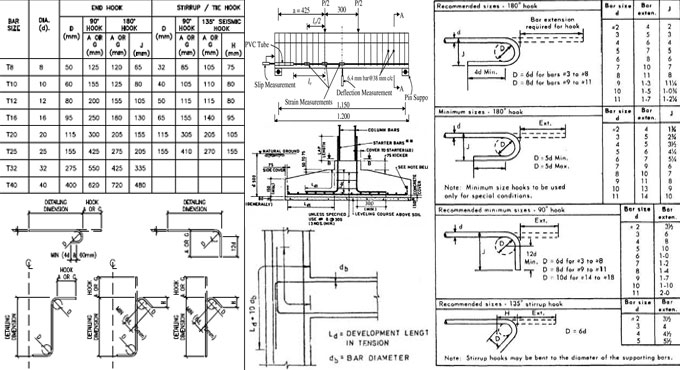
Why development length is vital in concrete?
Development Length can be defined in different ways :-
The connection among steel and concrete is identical to some extent. There should not be any continuous bar of steel during the structure. There always exist connections, joints and splices. Without development length, there is the possibility for collapsing the structure at the position of these crucial areas. But when adequate amount of length is arranged to maintain the constancy to the stability of the structure then the strength will be identical to all over.
As soon as a load is delivered on the beam, the beam bends as well as the reinforcing bar encounters a tensile force. It seems that the bar is being taken off from the supporting member. To resist this, it is required to arrange adequate length L implanted into supporting member. This length is known as development length.
Tie among steel and concrete is very crucial to facilitate joint functioning devoid of any slip in a loaded structure. If the connection among them is accurate, the plane section of a beam stays plane even after bending.
The length of a member that is essential to form the full bond is known as the anchorage length. The bond is calculated with bond stress. The local bond stress differentiates along a member with the deviation of bending moment. The average value all through its anchorage length is defined as the average bond stress.
So, a tensile member should be anchored perfectly with the arrangement of supplementary length on either side of the point of maximum tension. It is known as ?Development length in tension?. Likewise, for compression members also there is ?Development length Ld in compression?
In any RCC structure, it is supposed that:
Steel and concrete will function jointly. It means whatever forces delivered to concrete, similar will be put on reinforcement bars also.
Now, to ensure that the steel and concrete work at the same time, there must be perfect bond between concrete and steel. Therefore, under a definite load, the reinforcement bars will come out of the concrete instead of working collectively with it.
To make sure that exact & least bond is made, a specific length of reinforcement bar should be implanted into concrete. This belongs to the development length. It is provided on both sides in an RCC member separately.
Development Length stands for the lowest length required for reinforcing bar in order that the stresses can be induced in the bar and raise from zero to the yield strength (or to the induced stress) of the indicated bar. It is generally arranged at the meeting point of the two Bars for the transmission of stress at that the section.
The development length refers to a function of the bar size, yield strength, concrete strength and other factors like coating of the bar. It is generally 12D where D denotes the minimal diameter of the reinforcement. The development length of a bar is based on whether the bar remains in tension or compression. Tension development lengths are greater as compared to compression development lengths.
Benefits of giving Development length:-
If the reinforcement bar is no more essential to bear the tensile forces, i.e tension at that section is about zero, then it is necessary to develop the bar furthermore with purpose of developing a continuous structure with the grip/bond among the steel and concrete.
Without the development length, the restraining force in concrete section will be relatively thin(weak) and will not be able to retain the position of highly stressed bars that leads to separation of bars from concrete.
Therefore, the development length is required to give a fixed support to the bars. In some cases, where there does not exist any space or very little space is obtainable for extra length, hooks are arranged for restraints.


